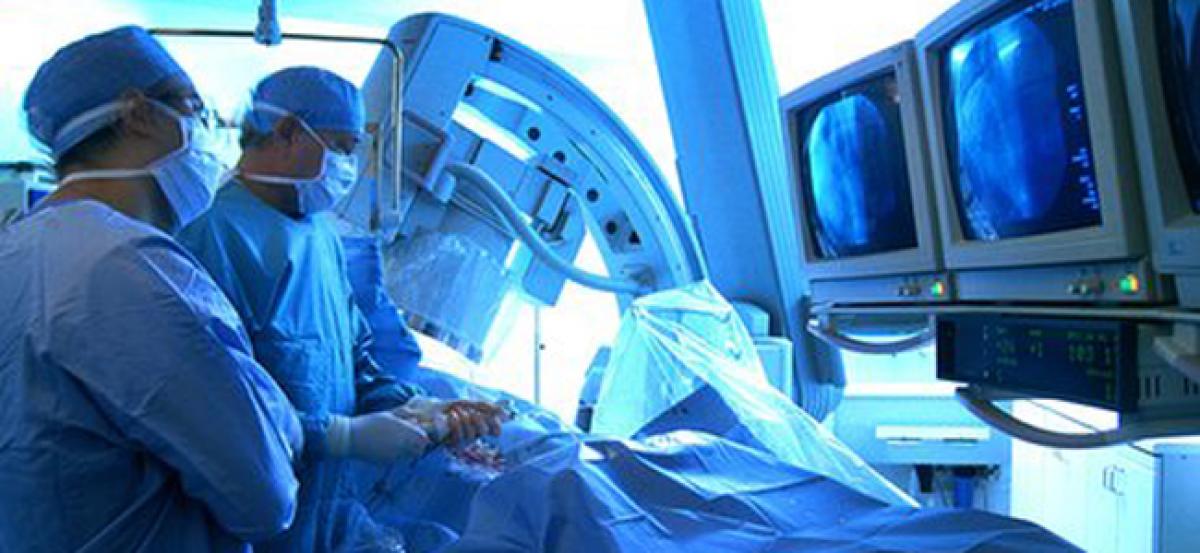Live
- A Million Lamps
- Eat to live, not live to eat
- Spirituality is extraordinary greed
- Bejan Daruwalla’s horoscope
- ICC’s arrest warrants call for accountability
- Author’s intellection key to autobiography
- India has firepower to win series down under
- MyVoice: Views of our readers 24th November 2024
- Meet four trailblazing women striving tirelessly to protect the planet
- Konkona Sen Sharma goes international, to star opposite Javier Bardem’s brother Carlos in ‘Mis(s)chief’
Just In

Scientists have successfully developed artificial blood vessels that can grow within the recipient, a breakthrough that would prevent the need for repeated surgeries in children with congenital heart defects. The research, led by University of Minnesota in the US, implanted these bioengineered blood vessels in lambs. One of the greatest challenges in vessel bioengineering is designing a vessel
Washington:Scientists have successfully developed artificial blood vessels that can grow within the recipient, a breakthrough that would prevent the need for repeated surgeries in children with congenital heart defects. The research, led by University of Minnesota in the US, implanted these bioengineered blood vessels in lambs.
One of the greatest challenges in vessel bioengineering is designing a vessel that will grow with its new owner. Researchers generated vessel-like tubes in the lab from a post-natal donor's skin cells and then removed the cells to minimise the chance of rejection. This also means the vessels can be stored and implanted when they are needed, without the need for customised cell growth of the recipient.
When implanted in a lamb, the tube was then repopulated by the recipient's own cells allowing it to grow. "This might be the first time we have an 'off-the-shelf' material that doctors can implant in a patient, and it can grow in the body," said Professor Robert Tranquillo from the University of Minnesota Department of Biomedical Engineering.
"In the future, this could potentially mean one surgery instead of five or more surgeries that some children with heart defects have before adulthood," said Tranquillo. Researchers combined sheep skin cells in a gelatin-like material, called fibrin, in the form of a tube and then rhythmically pumped in nutrients necessary for cell growth using a bioreactor for up to five weeks.
The pumping bioreactor provided both nutrients and "exercise" to strengthen and stiffen the tube. The bioreactor, developed with Zeeshan Syedain, a senior research associate in Tranquillo's lab, was a key component of developing the bioartificial vessel to be stronger than a native artery so it would not burst in the patient. The researchers then used special detergents to wash away all the sheep cells, leaving behind a cell-free matrix that does not cause immune reaction when implanted.
When the vessel graft replaced a part of the pulmonary artery in three lambs at five weeks of age, the implanted vessels were soon populated by the lambs' own cells, causing the vessel to bend its shape and grow together with the recipient until adulthood. At 50 weeks of age, the sheep's blood vessel graft had increased 56 per cent in diameter and the amount of blood that could be pumped through the vessel increased 216 per cent.
The collagen protein also had increased 465 per cent, proving that the vessel had not merely stretched but had actually grown. No adverse effects such as clotting, vessel narrowing, or calcification were observed. "We saw growth and none of the bad things happened. The results are very encouraging," Tranquillo said. The study was published in the journal Nature Communications.

© 2024 Hyderabad Media House Limited/The Hans India. All rights reserved. Powered by hocalwire.com







